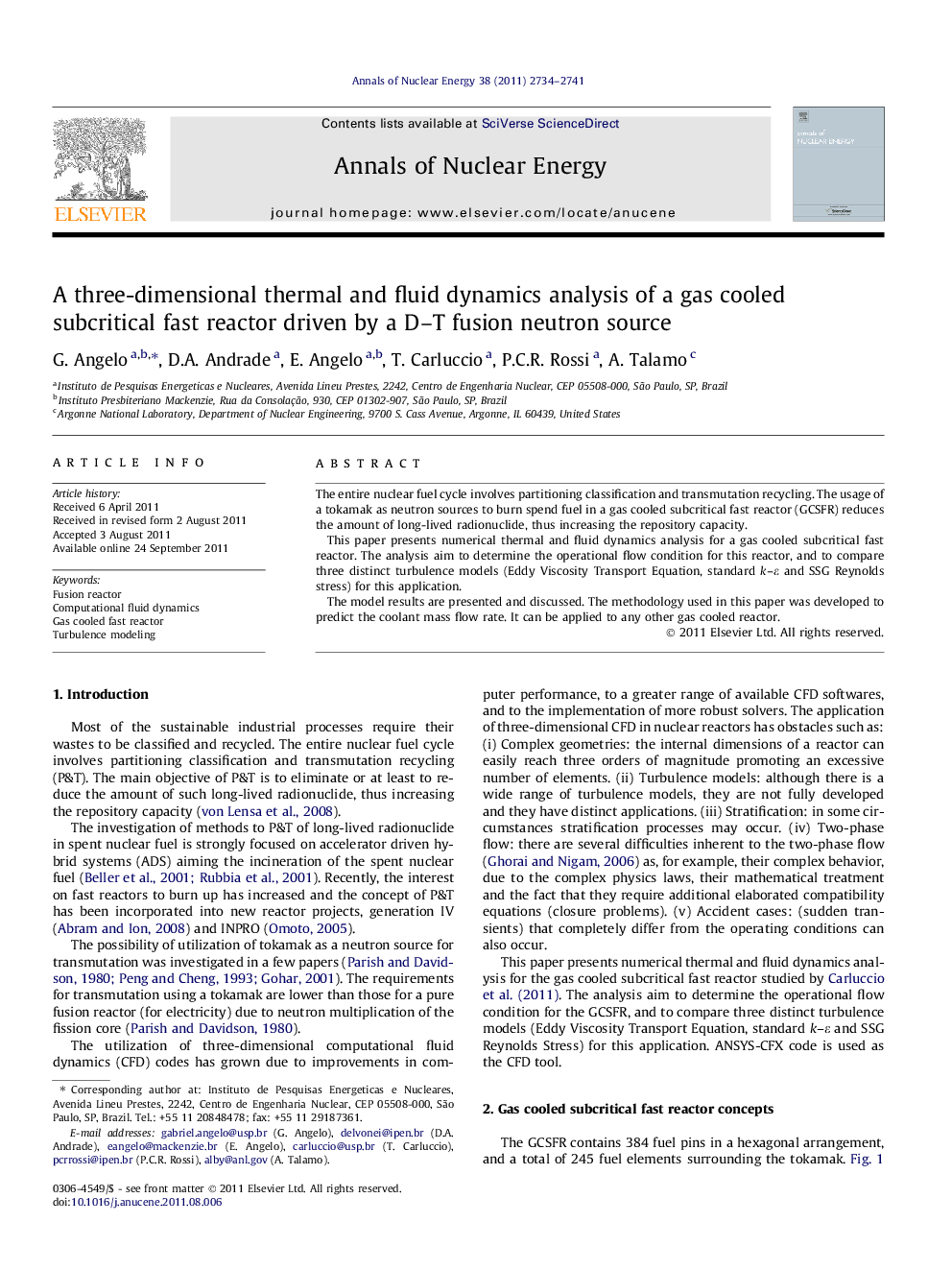| Article ID | Journal | Published Year | Pages | File Type |
|---|---|---|---|---|
| 1729238 | Annals of Nuclear Energy | 2011 | 8 Pages |
The entire nuclear fuel cycle involves partitioning classification and transmutation recycling. The usage of a tokamak as neutron sources to burn spend fuel in a gas cooled subcritical fast reactor (GCSFR) reduces the amount of long-lived radionuclide, thus increasing the repository capacity.This paper presents numerical thermal and fluid dynamics analysis for a gas cooled subcritical fast reactor. The analysis aim to determine the operational flow condition for this reactor, and to compare three distinct turbulence models (Eddy Viscosity Transport Equation, standard k–ε and SSG Reynolds stress) for this application.The model results are presented and discussed. The methodology used in this paper was developed to predict the coolant mass flow rate. It can be applied to any other gas cooled reactor.
► A thermal fluid dynamics numerical model was created for a gas cooled subcritical fast reactor. ► Standard k–ε model, Eddy Viscosity Transport Equation model underestimates the fuel temperature. ► For a conservative assumption, SSG Reynolds stress model was chosen. ► Creep strength is the most important parameter in fuel design.
